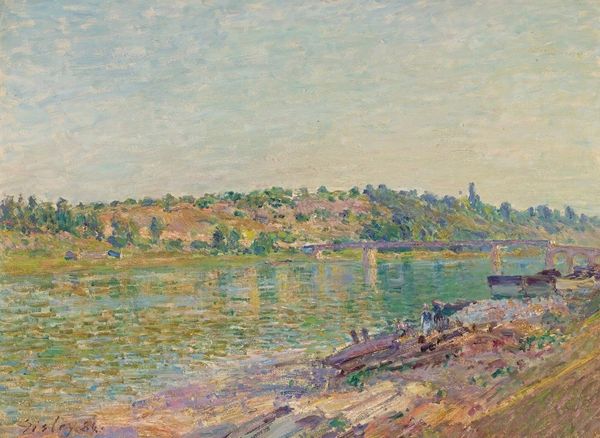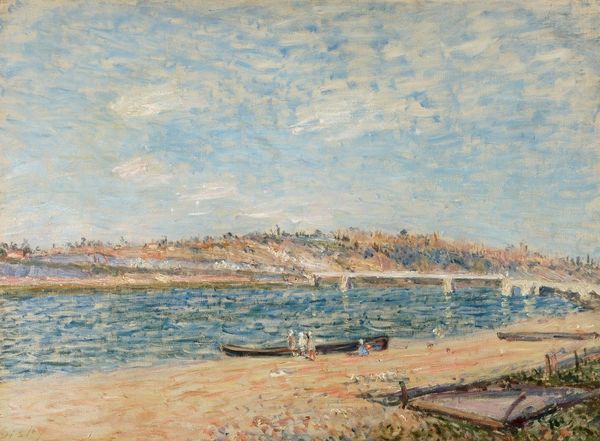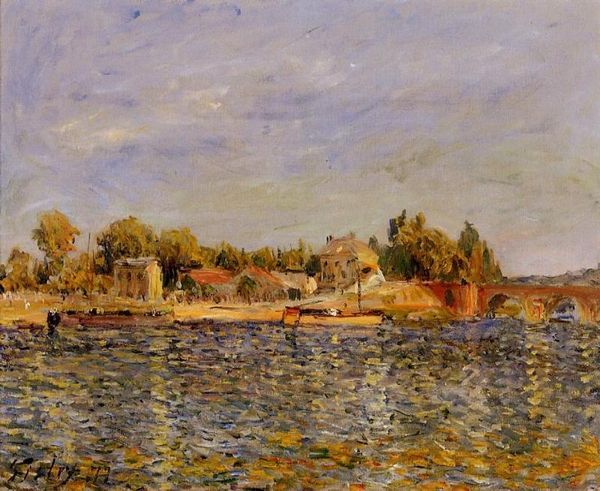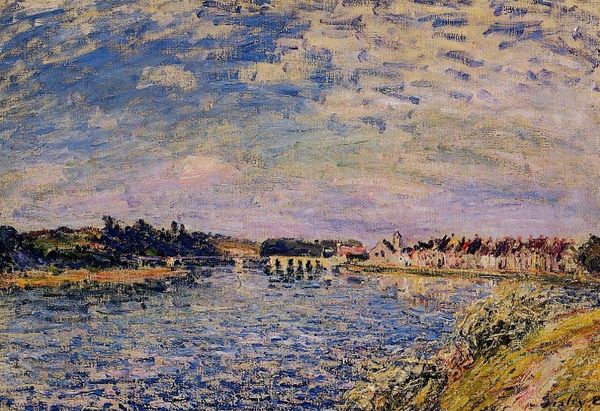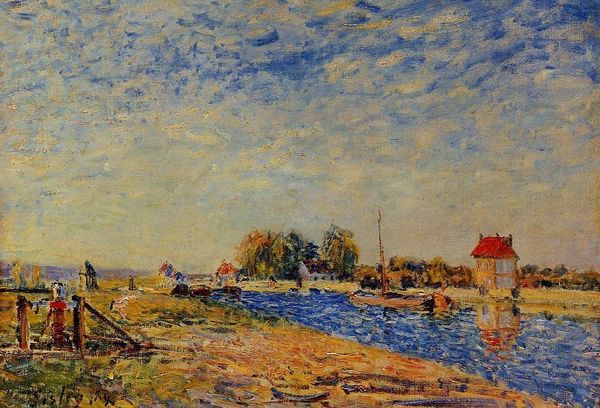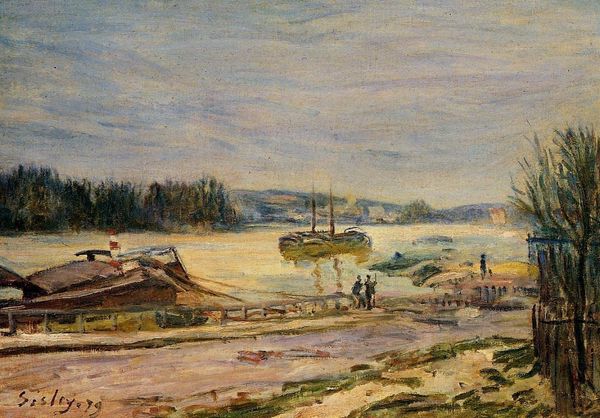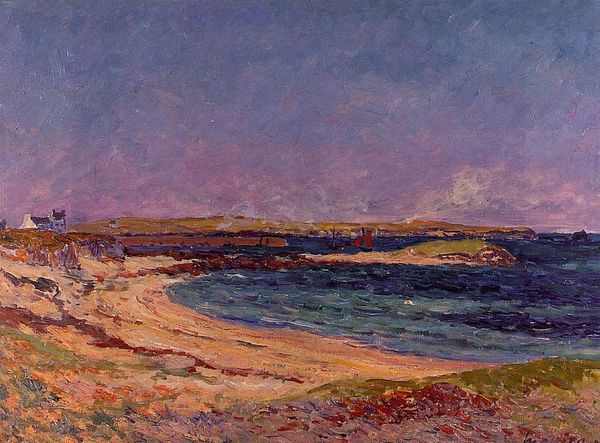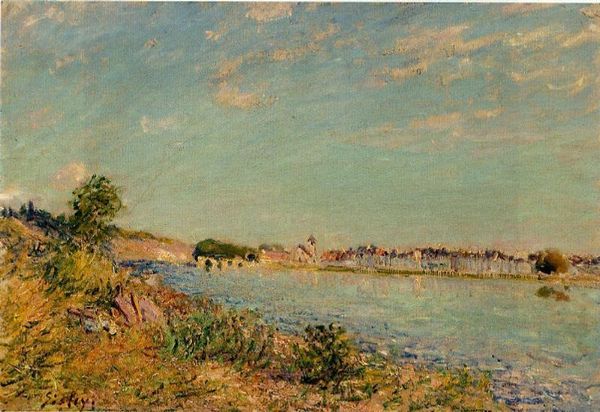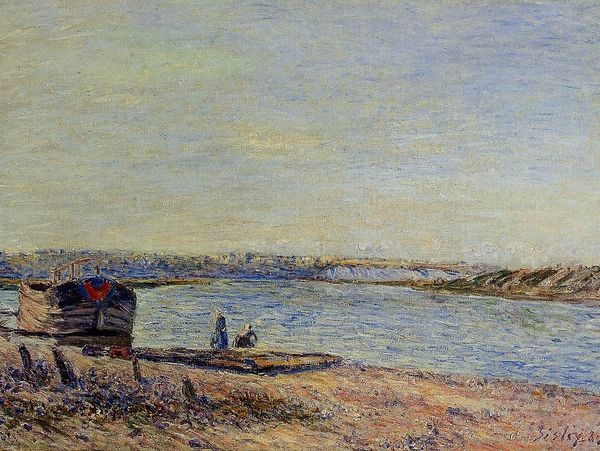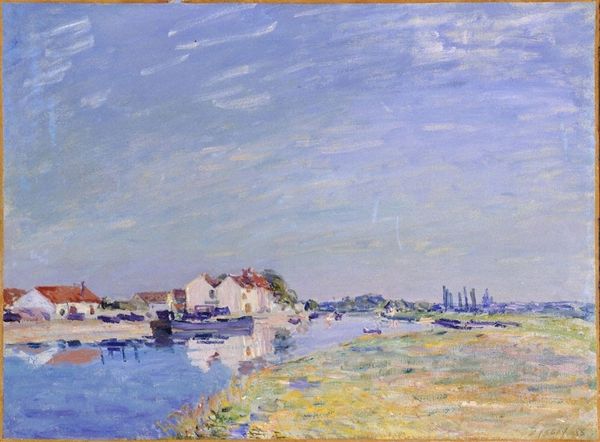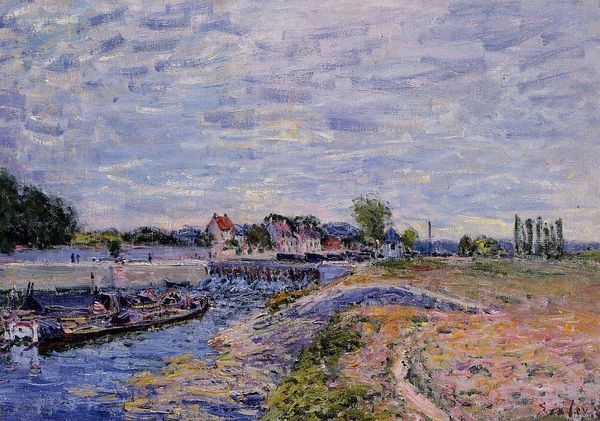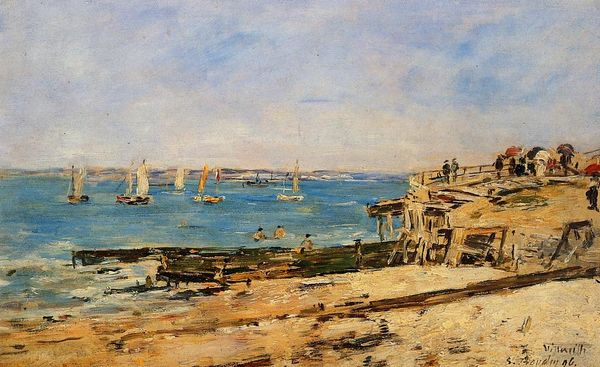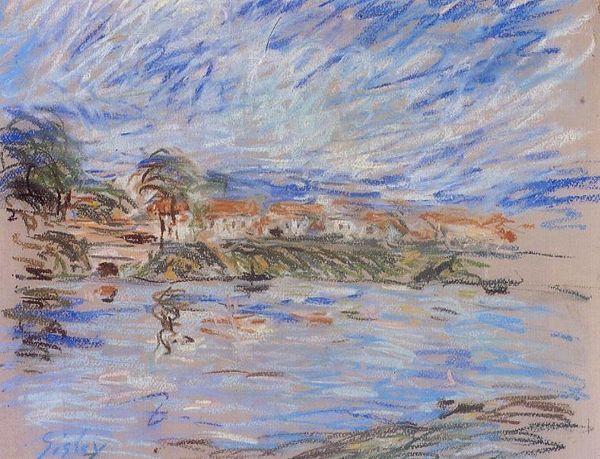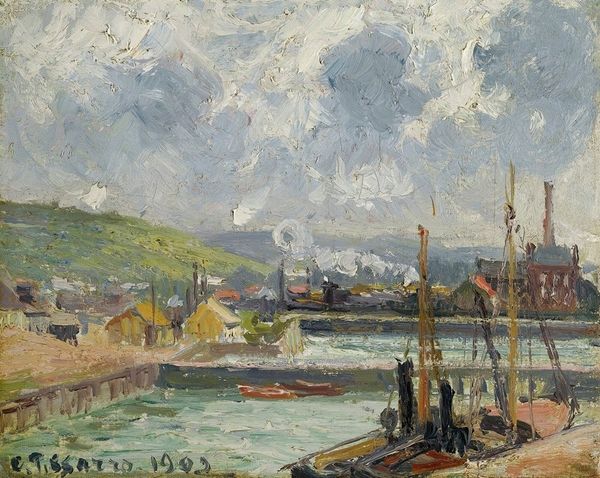
Dimensions: 50 x 65 cm
Copyright: Public domain
Editor: So, this is Alfred Sisley's "Riverbanks at Saint Mammes," painted in 1884. The oil paint gives it this beautiful, almost shimmering quality, but the overall scene feels…sort of still. What do you see when you look at this piece? Curator: I see the quiet tension between nature and industry, typical for the Impressionists. But Sisley, perhaps more than Monet, really understood the sociopolitical element inherent to these landscapes. He presents Saint Mammes, a nexus of river trade, not as some romantic idyll, but as a working environment, though almost eerily devoid of labour. Notice the figures – almost ornamental, rendered in soft strokes that nearly blend with the landscape itself. Editor: That’s interesting – ornamental. So you’re saying the people almost become part of the scene, rather than standing out? Curator: Precisely! It begs the question, doesn't it: Who are paintings *for* at this time, and how do the people depicted in paintings such as this figure into those markets? Also, how does this differ from earlier landscape painting that had figures included. Are those similarities and differences merely aesthetic, or something else? What story do *you* think Sisley is trying to tell, consciously or otherwise, by situating those figures like that? Editor: I suppose, rather than romanticizing the river and the people by it, he presents it with an ambivalence. Almost as if people just *exist* within this industry, without actively contributing. Curator: That's a fair point! This reminds us that even supposedly straightforward landscape painting of this era are shaped by social structures and power dynamics, which are reflected through the presence, or in this case maybe the ghostlike absence, of certain actors. Editor: It gives me a fresh view of the impressionists; I had never noticed these power relations that are also a part of landscapes! Curator: Exactly! Paintings such as this serve as an insight on the dynamics between people and the socio-economic system in place.
Comments
No comments
Be the first to comment and join the conversation on the ultimate creative platform.
